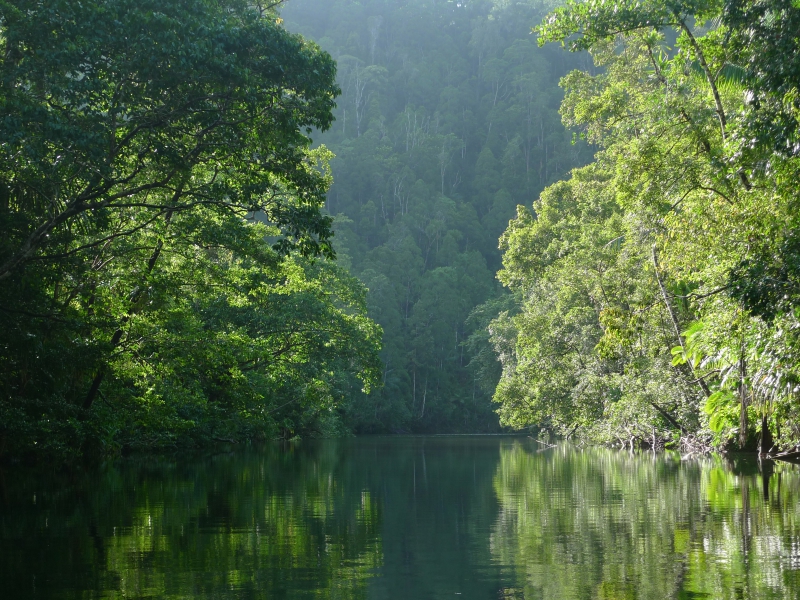Posted in Natural Resources Management
Biodiversity

East Africa is well endowed with a variety of ecosystems that provide varied services, as well as habitats for a wide range of species. Burundi has 13 protected areas covering 100,000 ha of land. About 172,000 ha (or 6.7%) of Burundi is forested. These ecosystems harbour 2,500 higher plant species, 145 bird species, 107 mammal species, 79 reptile species, 18 amphibian species and 5 fish species.
The Kenyan coastline is characterised by a rich diversity of flora and fauna, including fish, coral reefs and mangrove forests. The rangelands are composed of a number of habitat structures ranging from open grasslands to closed woody and / or bushy vegetation with varying amounts and composition of grass cover and species.
Rwanda’s location at the heart of the Albertine Rift eco-region in the western arm of Africa’s Rift Valley makes it one of Africa’s most biologically diverse regions. It is home to some 40% of the continent’s mammal species (402 species), a huge diversity of birds (1,061 species), reptiles and amphibians (293 species), and higher plants (5,793 species).
Tanzania has a diverse spectrum of fauna and flora, including a wide variety of endemic species and sub-species. The biological diversity and degree of endemism consist of primates (20 species and 4 endemic), antelopes (34 species and 2 endemic), fish (with many endemic in Lake Victoria, Tanganyika and Nyasa and other small lakes and rivers), reptiles (290 species and 75 endemic), amphibians (40 endemic), invertebrates and plants (around 11,000 species including many endemic).
Uganda has a rich array of natural resources which include water and wetlands, biodiversity, fisheries, forestry, land resources, wildlife, and minerals among others. The country has more than 5,000 plant species along with 345 mammals, 1,015 birds, 165 reptiles and 43 amphibians.
Forestry

The East African region has a wide variety of forests that support a wealth of biological diversity. The major forest types include tropical and sub-tropical forests, forests plantations, Miombo woodlands, Savannah, Acacia woodlands and mangroves. The forests are vital to people’s livelihoods and regional socio economic development through provision of goods and services. Apart from providing fuel wood for energy, timber and poles for construction, medicine and food, they also protect soil from erosion, harbour valuable biodiversity and are water catchment areas and offer recreational opportunities.
Forest management challenges:
Despite the importance, forests are facing numerous challenges that threaten and undermine their potential contribution in conservation, poverty alleviation and economic development. While climate change threatens to change the types and condition of forests, unsustainable exploitation through logging, unsustainable tree cutting, forests conversion and infrastructure development degrade and fragment the forests in the region. At present, exploitation far exceeds conservation, which has led to drastic loss of forest cover.
Challenges such as inadequate collaboration in forest management among Partner States, inadequate capacity in planning and program implementation at national levels and conflicting forest policies can be resolved by developing a robust and comprehensive regional forest policy to support regional forests conservation and complement national forest initiatives.
The EAC Climate Change Policy also identifies the Forest Management Sector as one of the critical sectors for climate change adaptation and mitigation since forests are considered carbon sinks.
Regional Forest Policy:
The EAC Partner States have recognised the importance of forests and the need for a regional forest policy to among other things maximise the contribution of the forest sector in improving people’s livelihoods and nature conservation.
This is supported by Chapter 19, Article 111 of the EAC Treaty where Partner States agree to take concerted measures to foster co-operation in the joint and efficient management and the sustainable utilisation of natural resources within the Community for the mutual benefit of the Partner States.
Article 114, section 2(a)(i) with regard to the conservation and management of forests calls for Partner States to take necessary measures through:
- the adoption of common policies for, and the exchange of information on the development, conservation and management of natural forests, commercial plantations and natural reserves; the joint promotion of common forestry practices within the Community;
- the joint utilisation of forestry training and research facilities;
- the adoption of common regulations for the conservation and management of all catchment forests within the Community;
- the establishment of uniform regulations for the utilisation of forestry resources in order to reduce the depletion of natural forests and avoid desertification within the Community; and
- the establishment of Api-Agro Forestry Systems.
The specific objectives of the forest policy will among other things involve the following:
- Protecting and enhancing the quality of EAC regional forest resources for the benefits of its citizens and future generations including productive capacity, health and vitality;
- Ensuring that extraction of forest products in the region is sustainable and done in accordance with laws and regulations governing forest management;
- Maintaining or enhancing the ecosystem services provided by forests; and
- Supporting EAC’s partner states in managing forest resources to produce the range and mix of goods and services demanded at local, national, regional and global levels.
Posted in Natural Resources Management
The Protocol on Environment and Natural Resources Management was signed by the Republic of Kenya, Republic of Uganda and United Republic of Tanzania on 3rd April 2006. The Protocol has since been ratified by the Republic of Uganda and the Republic of Kenya in 2010 and 2011 respectively. The Republic of Rwanda and the Republic of Burundi were not yet EAC Partner States at the time the Protocol was negotiated and signed.
The United Republic of Tanzania has not ratified the Protocol due to a number of issues. The process to address these issues in order to finalise the ratification process and make the Protocol operational is ongoing under the guidance of the Council of Ministers. The Protocol is currently not in force and hence not a legally binding document pending ratification by all Partner States.

